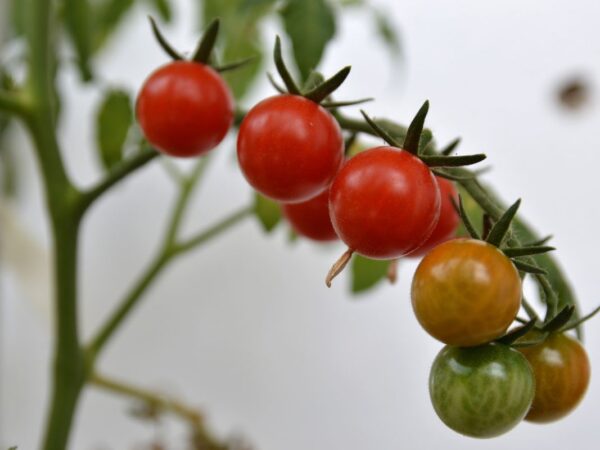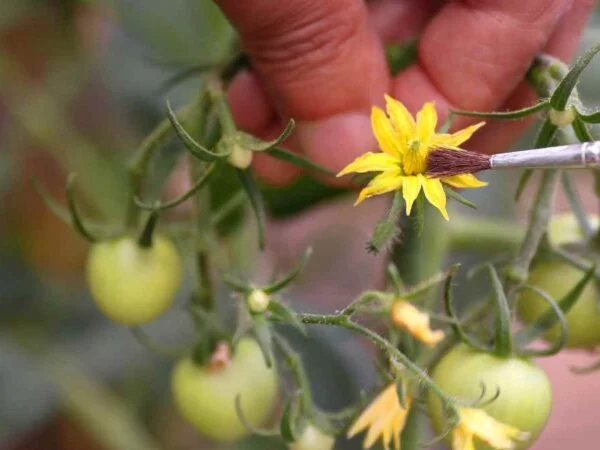Understanding Tomato Hornworms: Identifying and Learning About the Pest
Tomato hornworms are destructive pests that can wreak havoc on tomato plants if not properly controlled. These large, green caterpillars measure about 3 to 4 inches in length and are known for their voracious appetite. One way to identify tomato hornworms is by their distinctive markings. They have seven diagonal white stripes on their bodies and a horn-like projection at the end, hence the name "hornworm."
Understanding the life cycle of tomato hornworms is also crucial for effective pest management. These pests go through a complete metamorphosis, starting as eggs laid on the undersides of tomato leaves. Once hatched, the larvae feed on the foliage, growing rapidly and causing significant defoliation. As they mature, they can even devour tomato fruits. If left unchecked, tomato hornworm infestations can result in stunted growth and reduced yields, making it essential to learn about these pests and implement appropriate control measures.
Creating a Welcoming Garden Environment: Attracting Natural Predators of Tomato Hornworms
Creating a welcoming garden environment is key to attracting natural predators of tomato hornworms. These predators, such as ladybugs, lacewings, and parasitic wasps, can significantly help in keeping the tomato hornworm population in check.
One way to attract these beneficial insects is by planting a diverse range of flowering plants. These plants not only provide nectar and pollen as food sources for these predators, but they also act as natural attractors, drawing them to your garden. Additionally, incorporating specific plants like dill, fennel, and parsley can be particularly effective since they attract parasitic wasps whose larvae feed on tomato hornworms. By creating an environment that supports the presence of these natural predators, you can reduce the need for chemical pesticides and establish a balanced ecosystem in your garden.
Organic Pest Control Methods: Homemade Remedies to Combat Tomato Hornworm Infestations
Using organic pest control methods is a safe and effective way to combat tomato hornworm infestations in your garden. These homemade remedies are not only environmentally friendly but also affordable and easy to make. One popular remedy is a homemade insecticidal soap spray, which can be made by mixing liquid dish soap and water. This solution can be sprayed directly on the tomato hornworms, suffocating and killing them. Another effective homemade remedy is neem oil, which is derived from the seeds of the neem tree. Neem oil acts as a natural insecticide, disrupting the tomato hornworms' lifecycle and preventing them from reproducing. By regularly using these homemade remedies, you can keep tomato hornworms at bay, protecting your precious tomato plants from damage.
Companion Planting: Utilizing Beneficial Plants to Deter Tomato Hornworms
Companion planting is a popular gardening technique that involves planting certain types of plants together to benefit one another. When it comes to deterring tomato hornworms, there are several beneficial plants that you can include in your garden. One such plant is the marigold. Marigolds not only add a vibrant splash of color to your garden, but they also emit a scent that repels tomato hornworms. By planting marigolds near your tomatoes, you can help deter these pests and protect your plants.
Another beneficial plant to consider is the basil. This aromatic herb is known for its strong fragrance, which has been shown to repel tomato hornworms. By planting basil close to your tomatoes, you can help deter these pests from feasting on your plants. Plus, having basil in your garden also means that you'll have a fresh supply of this versatile herb to use in your cooking. So, not only will companion planting help protect your tomato plants, but it will also provide you with additional benefits in the form of fresh herbs.
Practicing Proper Garden Maintenance: Removing Weeds and Diseased Plants to Discourage Tomato Hornworms
Proper garden maintenance plays a crucial role in preventing tomato hornworm infestations. One of the key practices is removing weeds from your garden. Weeds not only compete with your tomato plants for nutrients and water but also serve as hiding spots and breeding grounds for tomato hornworms. By regularly hoing or pulling out weeds, you can significantly reduce the likelihood of these pests finding shelter and food in your garden.
In addition to removing weeds, it is essential to promptly remove any diseased plants from your garden. Diseased plants are more susceptible to tomato hornworm infestations, as they are weakened and provide an easy target for pests. By removing these plants as soon as you notice signs of disease, such as wilting or discoloration, you can prevent the spread of pathogens and discourage tomato hornworms from taking hold in your garden. Regular inspection and timely removal of diseased plants are crucial in maintaining a healthy and hornworm-free garden.
Implementing Physical Barriers: Using Protective Covers and Netting to Prevent Tomato Hornworm Infestations
In the battle against tomato hornworms, implementing physical barriers can be an effective method to prevent infestations. Protective covers and netting serve as barriers, creating a physical obstacle that prevents these pests from reaching your tomato plants. By creating a physical barrier, you can provide a layer of protection for your crops, reducing the chances of damage caused by these voracious caterpillars.
When choosing protective covers and netting, opt for materials that are sturdy and tightly woven to ensure that tomato hornworms are unable to penetrate or pass through. Covers should be secured firmly around the plants, ensuring there are no gaps or loose ends that could provide access points for these pests. Additionally, make sure that the covers do not obstruct sunlight and air circulation, as adequate light and ventilation are crucial for the healthy growth of your tomato plants. By utilizing physical barriers such as protective covers and netting, you can create a fortress-like defense that prevents tomato hornworms from wreaking havoc on your precious crops.
- Protective covers and netting serve as physical barriers against tomato hornworms
- These barriers prevent the pests from reaching your tomato plants
- Sturdy and tightly woven materials should be chosen for optimal effectiveness
- Covers should be secured firmly around the plants to eliminate access points for pests
- Ensure that there are no gaps or loose ends in the covers
- Adequate sunlight and air circulation must not be obstructed by the covers
- Physical barriers create a fortress-like defense against tomato hornworm infestations
Early Detection and Manual Removal: Spotting Tomato Hornworms and Safely Removing Them by Hand
Tomato hornworms can be a persistent problem for gardeners, wreaking havoc on tomato plants and other members of the nightshade family. Spotting these pests early is crucial in preventing widespread infestations and minimizing damage to your crops. One of the easiest ways to identify tomato hornworms is by their distinctive appearance. These caterpillars have a vibrant green body with diagonal white stripes running along their sides. They are also characterized by a prominent horn-like protrusion on their rear end. When searching for tomato hornworms, pay close attention to the undersides of leaves and inspect the stems as well, as they tend to blend in with the foliage.
Once you have successfully located a tomato hornworm, it is important first to ensure your safety before removing it. These caterpillars can be quite large, reaching up to four inches in length, and may also possess a defense mechanism in the form of spiky hairs that can cause irritation. To safely remove a tomato hornworm, gently grasp it near the rear end and carefully lift it off the plant. Be cautious not to squish the caterpillar, as this can release its greenish-brown droppings, which may attract other pests. Alternatively, you can use a pair of gardening gloves or small tongs to pick up the tomato hornworm. Dispose of the caterpillar by dropping it into a bucket of soapy water or sealing it in a plastic bag and discarding it in the trash.
Promoting Good Hygiene: Cleaning Up Garden Debris and Maintaining a Tidy Growing Area
Keeping your garden free of debris and maintaining a tidy growing area are essential practices in promoting good hygiene. Regularly removing fallen leaves, weeds, and other organic matter not only creates a cleaner environment but also helps prevent the buildup of pests and diseases. By eliminating hiding spots for insects and reducing the chances of fungal growth, you can significantly reduce the risk of tomato hornworm infestations. Additionally, maintaining a neat and organized garden allows for better airflow and sunlight penetration, which are crucial for the overall health and vitality of your plants.
To effectively clean up garden debris, start by regularly raking and collecting fallen leaves, twigs, and plant debris, especially during the fall season. Dispose of them in a compost pile or discard them away from the garden to avoid creating a breeding ground for pests. It is also important to promptly remove any dead or diseased plants as they can attract pests and pathogens. Pruning back overgrown vegetation and tying up loose branches will not only improve the aesthetic appeal of your garden but also create a more open space that discourages tomato hornworms from hiding or laying their eggs. Remember, a tidy growing area decreases the likelihood of pests finding a comfortable home in your garden, enhancing the overall health and productivity of your plants.
Natural Repellents: Harnessing the Power of Odors and Essential Oils to Repel Tomato Hornworms
Using natural repellents is an effective way to ward off tomato hornworms in your garden. These pests are highly sensitive to certain odors and essential oils, making them useful tools for deterring their presence. Some popular repellents include garlic, peppermint, and neem oil.
Garlic is a powerful insect repellent and can be mixed with water to create a spray. The strong odor is unpleasant to tomato hornworms, causing them to avoid the sprayed areas. Peppermint oil has a similar effect, as the strong scent disrupts the hornworms' ability to detect their desired food sources. Neem oil, derived from the neem tree, acts as both a repellent and a growth regulator for tomato hornworms. By using these natural repellents, you can create a less welcoming environment for these destructive pests and protect your tomatoes.
Long-Term Prevention Strategies: Adopting Sustainable Gardening Practices to Minimize Tomato Hornworm Infestations
To effectively minimize the presence of tomato hornworms in your garden, it is crucial to adopt sustainable gardening practices that focus on prevention. These long-term strategies can help create an environment that is less attractive to these pests, reducing the likelihood of infestations and damage to your tomato plants.
One of the first steps in adopting sustainable gardening practices is to promote biodiversity within your garden. By growing a variety of plants, you can attract beneficial insects, birds, and other natural predators that feed on tomato hornworms. Planting flowers and herbs that are known to attract these beneficial creatures can create a balance in your garden ecosystem, helping to naturally control hornworm populations. Additionally, incorporating companion plants that deter tomato hornworms, such as basil or marigolds, can provide an added layer of defense for your tomato plants.
What is a tomato hornworm?
A tomato hornworm is a type of caterpillar that feeds on tomato plants and other plants in the same family, such as peppers and eggplants.
How do I identify a tomato hornworm?
Tomato hornworms are green in color with white diagonal stripes on their sides. They have a horn-like structure at the end of their abdomen, which gives them their name.
How can I attract natural predators of tomato hornworms to my garden?
You can attract natural predators such as birds, parasitic wasps, and beneficial insects like ladybugs by planting a variety of flowering plants, providing water sources, and avoiding the use of chemical pesticides.
What are some homemade pest control remedies for tomato hornworms?
Some homemade remedies include mixing garlic and water to create a spray, applying a solution of dish soap and water, or using neem oil. These can be sprayed directly on the tomato plants to deter hornworms.
Which plants can I companion plant with tomatoes to deter hornworms?
Plants such as marigolds, basil, and borage are known to repel tomato hornworms. By planting them near your tomatoes, you can help deter infestations.
Is it important to remove weeds and diseased plants from my garden to prevent hornworm infestations?
Yes, removing weeds and diseased plants is essential because they can attract tomato hornworms and provide them with a breeding ground. Maintaining a clean and healthy garden environment can help minimize infestations.
How can I use protective covers and netting to prevent tomato hornworm infestations?
By covering your tomato plants with floating row covers or using netting, you can create a physical barrier that prevents tomato hornworms from reaching your plants.
How do I spot tomato hornworms and remove them by hand?
Look for large green caterpillars with white diagonal stripes on your tomato plants. Wear gloves and carefully pick them off the plants, dropping them into a bucket of soapy water to kill them.
Why is it important to clean up garden debris and maintain a tidy growing area?
Garden debris and untidy areas can provide hiding places and shelter for tomato hornworms. By keeping your garden clean and tidy, you can reduce their hiding spots and discourage infestations.
Are there any natural repellents I can use to deter tomato hornworms?
Yes, strong odors from plants like mint, thyme, and sage can help repel tomato hornworms. You can also try using essential oils, such as peppermint or garlic oil, in your garden to deter them.
How can adopting sustainable gardening practices help minimize tomato hornworm infestations in the long term?
Sustainable gardening practices, such as using organic pest control methods, attracting natural predators, and promoting good hygiene, create a balanced and healthy ecosystem in your garden. This can help maintain the population of tomato hornworms at manageable levels and minimize infestations in the long run.
Image Source: Paid image from CANVA





